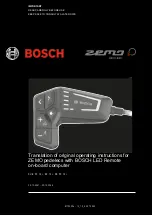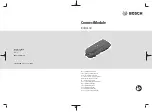
Many pedals cannot be disassembled to allow access to the
internal bearings and axle. However, it is usually possible to inject
a little oil onto the inside bearings, and this should be done every
six months. If the pedal is the type that can be fully
d i s a s s e mbled, then the bearings should be removed, cleaned and
greased every six to twelve months. Because of the wide variety
of pedal types and their internal complexity, disassembly procedures
are beyond the scope of this manual and further assistance
should be sought from a specialist.
Note: The right and left pedals of a bicycle each have a different thread and are not interchangeable.
Never force a pedal into the incorrect crank arm.
The right pedal, which attaches to the chainwheel side, is marked 'R' on the end of the axle, and screws in with a clock-
wise thread. The left pedal, which attaches to the other crank arm, is marked 'L' on the axle, and screws in with a
counter-clockwise thread.
Insert the correct pedal into the crank arm and begin to turn the thread with your fingers only. When the axle is screwed
all the way in, securely tighten using a 15mm wrench.
If removing a pedal, remember that the right pedal axle must be turned counter clockwise, i.e. the reverse of when fitting.
If replacing the original pedals with a new set, make sure the size and the axle thread is compatible with the cranks on
your bicycle. Bicycles use one of two types of cranks and these use different axle threads. Your bike may be equipped
with cranks that are a one piece design with no separate axle. These operate with pedals that have a 1/2"(12.7mm)
thread. Bikes equipped with three piece crank sets with a separate axle, left crank and right crank, use a slightly larger
9/16"(14mm) thread.
Note: Never try and force a pedal with the wrong thread size into a bicycle crank.
Pedal with toe clip and strap attached
Never ride in traffic with fully tightened toe straps.
71
11/99.bikemanual 11/24/99 3:54 PM Page 78
















































